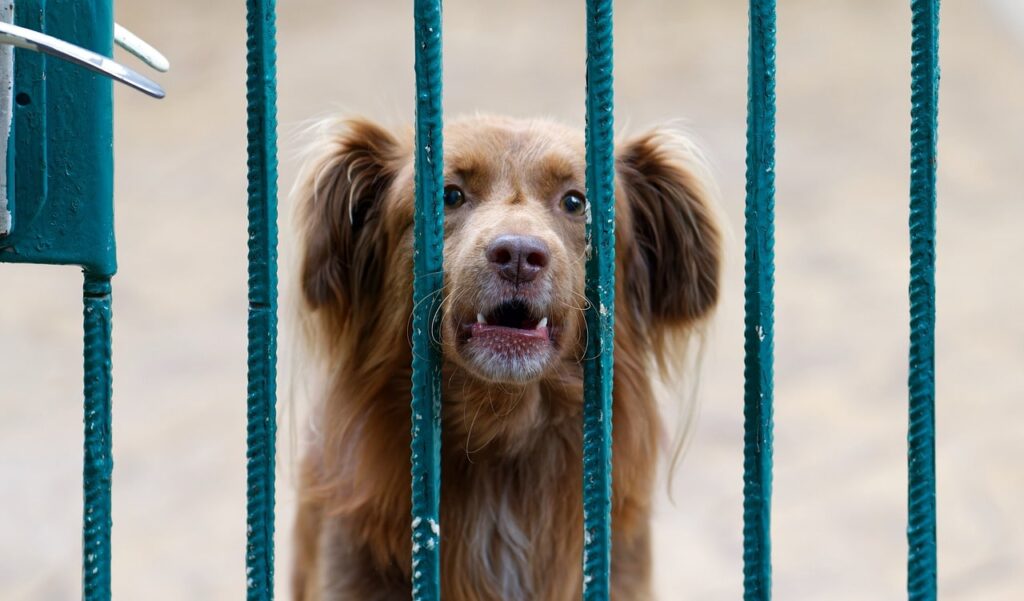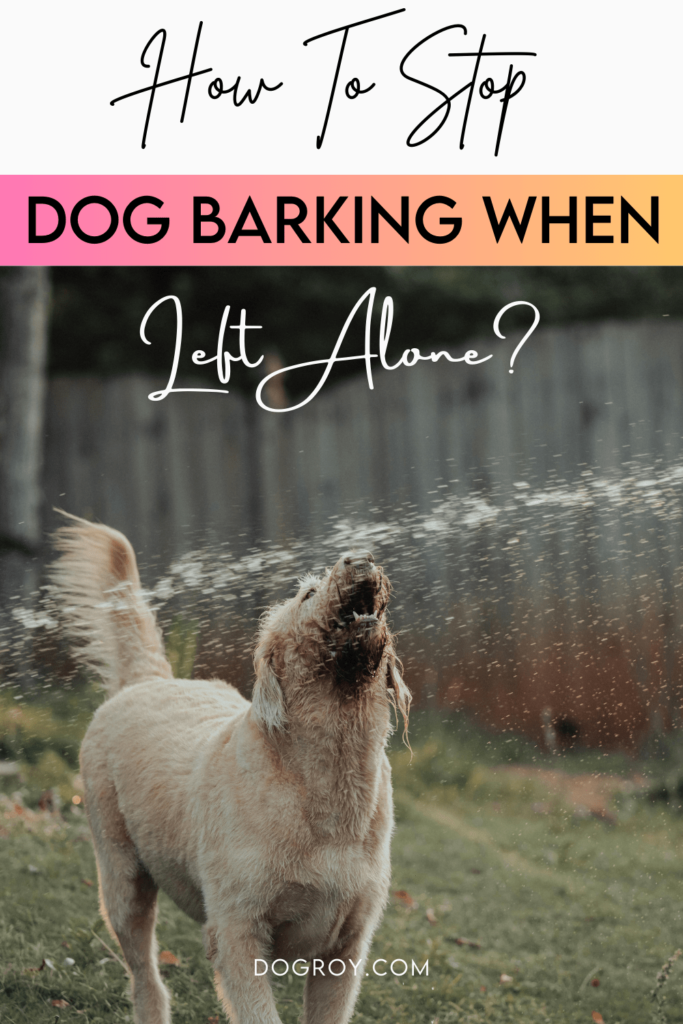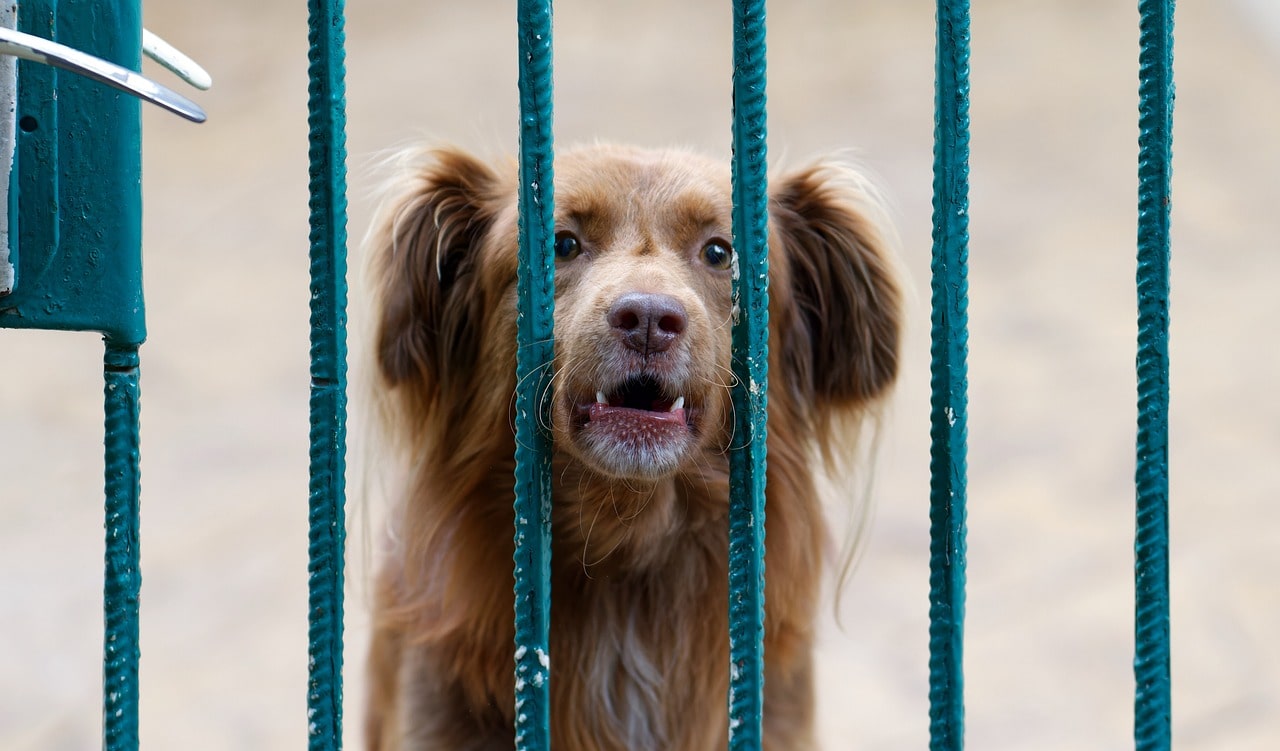Leaving your beloved dog alone can be a necessary part of life, but if their barking becomes a persistent soundtrack to your departures, it’s time to explore some solutions.
Welcome to our guide, where we’ve gathered 13 practical and easy-to-implement tips on How To Stop Dog Barking When Left Alone.
Whether your furry friend is a vocal enthusiast or experiences anxiety when you’re away, we’re here to empower you with strategies that not only address the barking issue but also create a calm and stress-free environment for your pup during your absence.
Dogs, being social creatures, may express their feelings through barking, especially when left alone.
The good news is that with a bit of understanding and the right approach, you can teach your dog to feel more secure and less inclined to bark excessively when they find themselves solo.
From identifying the root causes of their barking to incorporating positive reinforcement techniques, our goal is to help you foster a sense of tranquility for your furry companion, promoting a harmonious living space for both of you.
So, if you’ve ever wondered how to make those alone times less noisy and more peaceful, you’re in the right place.
Let’s dive into these 13 tips and work together to create a home environment where your dog feels content, secure, and less likely to unleash a symphony of barks in your absence.
Table of Contents
How To Stop Dog Barking When Left Alone?

1] Create a Comfortable Space
Designating a cozy and comfortable space for your dog when you’re away is akin to providing them with a home away from home.
Choose a quiet area in your home and furnish it with items that bring comfort, such as their favorite toys, a soft and familiar bed, and consider leaving an item of your clothing.
The scent of your clothing can provide reassurance, creating a soothing environment that mitigates the stress associated with your absence.
2] Gradual Alone Time Introductions
Helping your dog adjust to alone time is a gradual process where baby steps truly matter.
Initiate short intervals of alone time and progressively extend the duration.
This gradual approach builds your dog’s confidence, minimizes anxiety, and reduces the urge to bark.
Celebrate small successes, ensuring that each step reinforces the idea that being alone is a normal and non-threatening part of their routine.
Tip: “Build confidence and reduce anxiety by increasing alone time duration slowly.”
3] Engage in Pre-Departure Calmness
Setting the tone for departures involves maintaining a calm demeanor.
Avoid turning departures into elaborate events; instead, calmly pet your dog and use soothing tones.
By downplaying your departure, you create a positive association with the act of leaving.
This reassures your dog that your absence is temporary and not a cause for anxiety.
4] Interactive Toys and Treats
To keep your dog’s mind engaged and prevent boredom-related barking, provide interactive toys and treats.
Puzzle toys filled with treats can be a delightful distraction, encouraging mental stimulation.
This not only occupies their time but also creates a positive association between being alone and enjoyable activities, reducing the likelihood of excessive barking.
• Provide interactive toys and treats to keep your dog's mind engaged • Puzzle toys filled with treats encourage mental stimulation • Occupies their time and creates a positive association with being alone • Reduces the likelihood of boredom-related barking
5] Background Noise
Creating a soothing ambiance involves playing soft background music or turning on the TV.
This ambient noise helps mask external sounds, preventing your dog from barking at every passing noise.
The constant background noise can create a comforting atmosphere, minimizing the feeling of isolation and reducing the trigger for barking.
6] Interactive Cameras
Investing in interactive cameras provides a dual benefit: observation and communication.
These devices allow you to observe your dog remotely and even communicate with them using audio features.
The ability for your dog to hear your voice can offer reassurance, fostering a sense of connection and potentially easing separation anxiety.
Tip: “Hearing your voice eases anxiety, providing a sense of connection during your absence.”
7] Canine Companionship
Considering a second dog for companionship is a viable option if feasible.
Introducing a furry friend can alleviate loneliness and reduce the likelihood of excessive barking.
Ensure a gradual introduction to allow both dogs to acclimate to each other, and monitor their interactions to ensure a harmonious relationship.
8] Praise Prevails
When your dog remains quiet during your absence, it’s crucial to shower them with praise and treats upon your return.
Positive reinforcement for quiet moments strengthens the behavior of staying calm when left alone.
This creates a positive association with your absence and reinforces the idea that quiet behavior is rewarded, encouraging a more tranquil response.
Tip: “Positive reinforcement strengthens calm behavior, creating a positive association.”
9] Professional Training
Enlisting the help of a professional dog trainer provides specialized guidance tailored to your dog’s specific needs.
A trainer can assess your dog’s behavior and create a customized training plan to address barking when left alone.
Professional training offers effective techniques and strategies, ensuring a comprehensive approach to modifying your dog’s behavior.
10] Routine Changes
Changing your leaving routine occasionally is a strategic move to prevent anticipatory anxiety.
Dogs quickly pick up patterns, and altering your departure routine introduces an element of unpredictability.
This minimizes barking triggered by the expectation of your departure, as your dog becomes less reliant on specific cues leading up to your leaving.
Tip: “Alter patterns to minimize barking triggered by the expectation of your departure.”
11] Calming Scents
Exploring calming scents, such as lavender or chamomile, introduces aromatherapy for canines.
Consider using diffusers or calming sprays in your dog’s designated area to promote relaxation.
These scents have soothing properties that can create a serene atmosphere, potentially reducing stress-related barking and creating a more tranquil environment.
12] Professional Help
If barking persists, consulting with your veterinarian is crucial to rule out underlying health issues or anxiety disorders.
A vet can conduct a thorough examination, provide insights into your dog’s behavior, and recommend appropriate interventions.
This holistic approach ensures that both physical and psychological aspects contributing to excessive barking are addressed.
Tip: “Veterinary insights can guide interventions to address excessive barking effectively.”
13] A Social Pause
Enlisting the services of a doggy daycare or a pet sitter introduces a social pause to your dog’s routine.
This option provides social interaction, mental stimulation, and a change of scenery, effectively reducing boredom-related barking.
Regular social interactions contribute to your dog’s overall well-being and can significantly impact their behavior during periods of alone time.
How To Stop Dog Barking When Left Alone: FAQs
How long does it take to stop dog barking when left alone?
The duration varies, but consistent implementation of these tips can yield positive results within a few weeks. Patience and persistence are key to creating a serene environment.
Can older dogs learn to stop barking when left alone?
Absolutely! Older dogs can adapt to new behaviors with patient and consistent training. Tailor the strategies to your dog’s age and temperament for effective results.
Should I use a pet camera to monitor my dog?
Interactive cameras can be beneficial for both monitoring and communicating with your dog. They provide a sense of connection and may ease separation anxiety.
What if my dog’s barking is due to anxiety?
If anxiety is a concern, consult with your veterinarian or a professional dog trainer to address the root cause. Strategies such as behavioral training or anti-anxiety medications may be recommended.

In conclusion, the journey of learning How To Stop Dog Barking When Left Alone is a key aspect of harmonious pet ownership.
Armed with the 13 tips provided in this guide, remember that consistency and understanding are your allies.
By addressing the root causes, using positive reinforcement, and gradually acclimating your dog to solitude, you can successfully curb excessive barking and create a serene atmosphere for your canine companion when left alone.
Embrace the process, celebrate progress, and enjoy the tranquility of a quieter home with your content and well-behaved furry friend.





